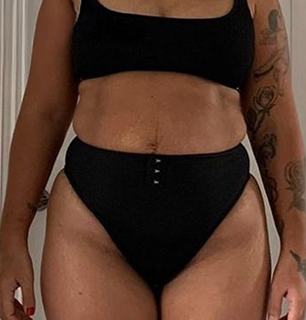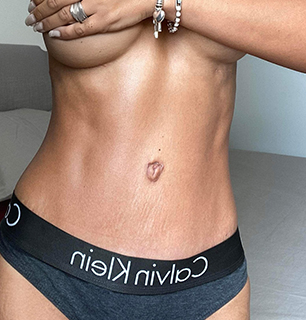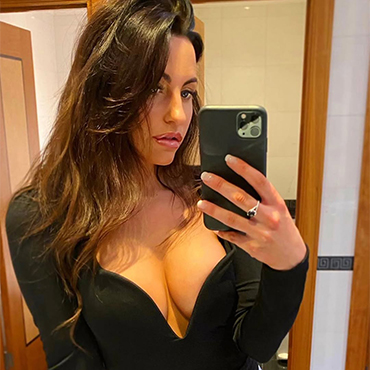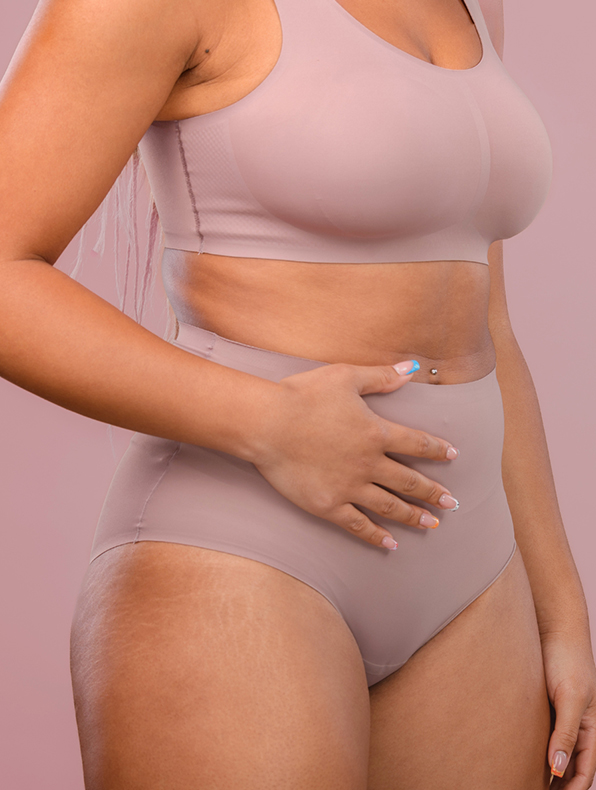

Why choose us for a Tummy Tuck?
- You will be seen and operated on by a fully qualified BAAPS/ BAPRAS Consultant plastic surgeon.
- Our prices are competitive and represent outstanding results.
- We provide a personal and holistic service to our patients
- We put your safety first!
“Tummy Tuck” or abdominoplasty, can noticeably improve the appearance of a large or protruding abdomen as well as considerably narrowing the waistline. This is achieved by removing excess skin and fat from the middle and lower abdomen as well as by tightening the loose underlying abdominal muscles. Cosmetic Surgeons London believe that this procedure is ideal for those of you who have been through childbirth. Pregnancy often results in your tummy having been stretched (leading to stretch marks) and the abdominal muscles weakened (divarication). Some patients may only require a “mini-abdominoplasty” with or without liposuction. There are many ladies who despite dieting and exercise still have fat and loose skin over the abdomen. Cosmetic Surgeons London can help you.
Lifetime guarantee implants


Unlocking confidence for
our patients



















Is tummy tuck or abdominoplasty surgery for you?
- Does having a “spare tire” bother you?
- Does having a fat roll bother you?
- Does having an abdominal bulge bother you?
- Do you have a “sagging” stomach after pregnancy or weight loss?
- Do you have stretch marks that embarrass you?
- Is your tummy out of proportion to the rest of your body?
If you answer “Yes” to any of the above then tummy tuck surgery or abdominoplasty may be the procedure for you to help get that flatter tighter tum. Cosmetic Surgeons London will guide you and tailor your treatments according to your needs.


Procedure Overview
Operation Time
1-2 hours
Anaesthetic
General Anaesthesia
Nights in Hospital
1-2 nights
How much time off work?
2-3 weeks
When can I exercise?
After 6 weeks
Book a 3D Remote Consultation
Evaluate and discuss the best options for you through remote video call.
FAQs
What does a tummy tuck procedure involve?
A tummy tuck procedure:
- Removes excess skin & fat
- Tightens your abdominal muscles
- Removes some of your skin affected by stretch marks
- Helps contour your tummy and gets it flatter and tighter.
The tummy tuck procedure can be either a:
- mini-abdominoplasty – this procedure is carried out if the skin and fat area are limited to below your belly button.
- full abdominoplasty – this procedure is carried out on the entire abdomen to tighten muscles and remove excess skin and fat. Liposuction can often be added to improve the contouring around you.
Where will the scars lie?
There are many approaches to a tummy tuck and all involve an incision in the lower abdomen in the area below the “bikini line.” For a complete tummy tuck, skin is separated from the abdominal wall up to the ribs and the underlying muscles and supportive tissues are tightened. This will narrow your waistline as well as strengthening and flattening your abdominal wall. Excess skin is removed, resulting in a flatter, trimmer and tighter stomach. Your surgeon will discuss the different incision options in advance of surgery so you will know what to expect.
Your Tummy Tuck Journey

Before Surgery
You will have seen Mr Sojitra on more than one occasion to fully answer all your questions. It is important to avoid medications, if possible, such as aspirin and non-steroidal anti-inflammatories (NSAIDs) e.g Ibuprofen (Nurofen), Sodium Diclofenac (Voltarol) for 1 week before surgery. These tablets may increase bleeding during and after surgery. It is advisable to stop smoking and no nicotine products 4 weeks before and after surgery from both a wound healing and an anaesthetic perspective.
The Day of Surgery
You will be admitted to hospital on the morning of surgery and Mr Sojitra along with his consultant anaesthetist will come and discuss the surgical plan again with you and make some marks on your skin with pen. The operation will take approximately 1-2 hours and you will wake up with dressings in place before being taken to the ward. In general, tummy tuck is performed as an in-patient procedure. You will need to have a friend or family member to drive you to and from the hospital and to look after you for the first few days following surgery. Drains are used and you will need to stay in hospital overnight.
Recovery
You will experience varying degrees of bruising, swelling, and some tenderness all of which improve by the day. Our consultant anaesthetist will prescribe you adequate medication to take home to alleviate any discomfort you may experience. You will be up and moving the day after surgery. It is important not to get the dressings wet after surgery and you will be advised on showering. Depending on your type of work, you may return to work between 14-21 days after your procedure. No heavy lifting or strenuous exercise for 6 weeks. It will take approximately 3 months before the swelling completely subsides and the final result seen. The scar will continue to improve for up to 18 months and you are encouraged to firmly massage the scar after 4 weeks. Your surgeon will see you 1 week after surgery at which point the dressings will be reduced and again at 2 weeks. At 2 weeks the stitches, which are dissolvable, will be trimmed flush with the skin so they cannot be seen. All dressings will be discarded at this stage. Your surgeon will closely follow your recovery to ensure you are able to resume normal exercising and activities. It is suggested you wear an abdominal support garment for 6 weeks.
Safety and potential complications?
Scars
Scarring on the whole is not problematic. A scar will always exist and will be hidden in the “bikini-line”. Certain individuals e.g. afro-carribean races and red haired individuals are at a higher risk of forming excess scar tissue (keloid or hypertrophic scars). Should these scars develop excellent advice and treatment will be provided by your surgeon.
Infection
This is an uncommon event and occurs in perhaps less than 1% cases. Antibiotics are given during induction of the general anaesthetic.
Bleeding
Rarely, small blood vessels that have been cauterised during surgery open up afterward. This results in a collection of blood (haematoma) that needs to be removed. This involves a return to the operating theatre where the blood collection is washed out. There are no permanent side effects due to this occurrence should it occur.
Delayed Wound Healing
This can occur in the lower central part of the scar and is more common in smokers as smoking impairs wound healing. When this happens, dressings are often applied by the nurse and the wound often heals without any surgical intervention.
Deep Vein Thrombosis (DVT)
Any general anaesthetic procedure is associated with a small risk of DVT which can potentially move to the lungs (Pulmonary Embolus). Here at Cosmetic Surgeons London we attempt to minimise this risk by the use of compression stockings before and after surgery, use of pneumatic compression devices during surgery and motivating the patient to mobilise as soon as possible after surgery.
